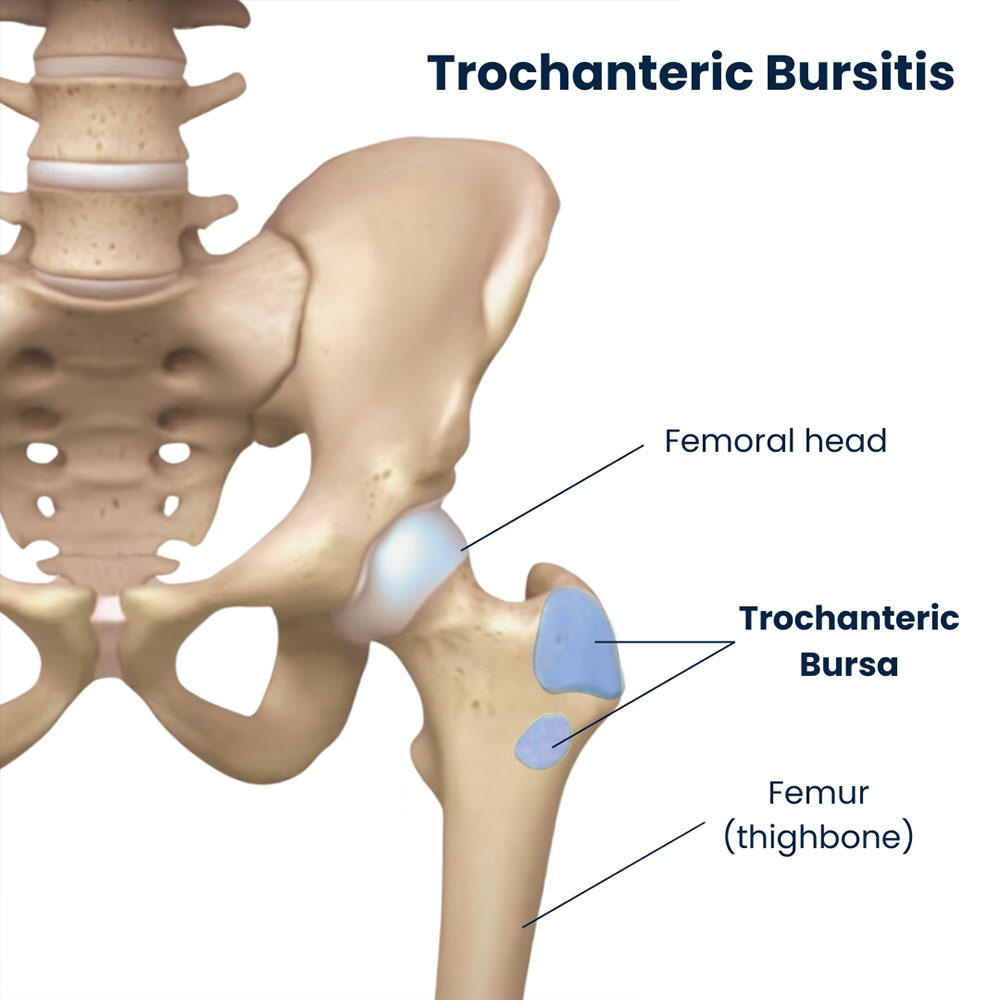 OUR LOCATIONSCall to book (212) 604-1300
OUR LOCATIONSCall to book (212) 604-1300
 OUR LOCATIONSCall to book (212) 604-1300
OUR LOCATIONSCall to book (212) 604-1300
Table of contents

The bursa facilitates smooth movement of your hips and legs with minimal friction at the joint. The inflammation of the trochanteric bursa causes the painful condition known as greater trochanteric pain syndrome (GTPS). This area is the attachment site for several muscles, and any injury directly at the site can lead to incapacitating pain and problems with walking and body movements.
An early diagnosis for trochanteric bursitis can boost the outcomes of trochanteric bursitis treatment. Dr. Amr Hosny and the expert pain management specialists at New York Pain Care use advanced techniques for the correct diagnosis and the most appropriate treatment of this hip condition. If you’re experiencing hip pain, tenderness or immobility, call on the experts in Midtown Manhattan, the Financial District or Greenwich Village. In New Jersey, visit the offices in Morris County, Bergen County or Union County.




There are multiple factors that can irritate or inflame the trochanteric bursa. This bursa sac reduces friction between the bones and soft tissue in the greater trochanter. When injured, you experience a lot of pain and other incapacitating symptoms.
Some of the common causes of trochanteric bursitis include:
Diagnosis of trochanteric bursitis requires specialized skills and equipment. Dr. Hosny is a board-certified and Harvard-trained specialist in pain-causing conditions. He uses the latest medical technology for diagnosis and greater trochanteric bursitis treatment.
Your doctor asks about your pain and other symptoms to narrow down the source of your pain and develop the best treatment plan. Most symptoms of greater trochanteric pain syndrome are like those of other hip conditions, such as hip tendonitis. Only your doctor can provide the correct diagnosis, although you may need to undergo additional tests.
Some signs that point to trochanteric bursitis include:
These symptoms provide important clues to your diagnosis, so you must tell your spine specialist about all your symptoms during your consultation. The team at New York Pain Care works to fully understand your condition through a review of your medical history, physical examination and imaging tests.


After the diagnosis, your doctor starts trochanteric bursitis treatment. The treatment plan depends on the underlying cause of the inflammation, severity of the condition, symptoms, your age, medical history and other factors.
Treatment options for trochanteric bursitis include:
Tired of dealing with the debilitating pain in your hip area? Contact the team at New York Pain Care for a trochanteric bursitis diagnosis and treatment. The doctors operate a number of state-of-the-art facilities in New York City and northern New Jersey. They’re equipped with the latest medical equipment to help you out of pain.
New York Pain Care
20 Squadron Blvd, Suite 290
New City, NY 10956
(212) 242-8160






